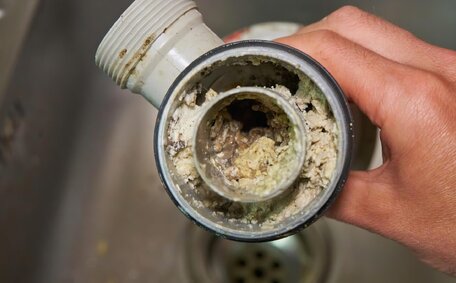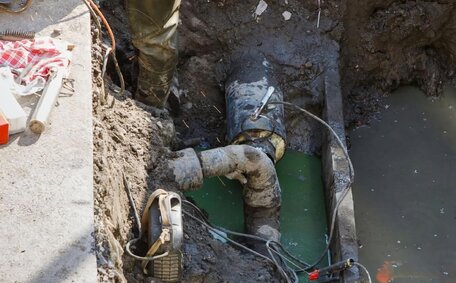Understanding Hot Water Supply and Usage in Your Home
A reliable hot water supply is crucial to avoid situations like suddenly running out during a shower. An 8-minute shower typically consumes about 14 litres of water. Daily showers, washing dishes, doing laundry, and other activities that consume hot water underscore the importance of a dependable system for hygiene and convenience.
The amount of hot water needed depends on the number of people in the household and their usage patterns. Expanded families or those with teens often use more hot water, putting extra demand on the storage tank. Common reasons for increased hot water use in a household include:
- Showers - 14 litres for an 8 minute shower
- Bath - 80 litres for a standard bath
- Laundry - up to 150 litres per load
- Dishes - 5 litres per load
Understanding your hot water usage and tank operation is key to addressing supply problems. This information can assist greatly in accurately sizing your hot water systems to meet demand.
Hot Water Heater Sizing Issues
A perfectly sized hot water system is critical to meet household needs and prevent unexpected shortages. An undersized unit is a common cause of quickly depleting hot water supplies.
As a rule of thumb, each person in the household needs approximately 14-20 litres of hot water storage to avoid disruptions. For a four-person household, a well-sized water heater should store between 190 and 300 litres to meet usage needs.
Observe these signs that may hint at your system being undersized for your hot water needs:
- You might notice hot water running out swiftly during showers or laundry
- The hot water flow rate from faucets and showers is weaker than usual
- Long recovery times after using hot water, suggesting the heater is too small for your needs as the tank struggles to reheat,
- You need to restrict usage to conserve enough hot water and prevent it from running out
If you experience these signs, consider that your water heater might be too small for your daily usage. Transitioning to a tankless water heating system is a smart fix for your hot water scarcity, as these units provide heated water precisely when you need it.
As a plumbing specialist, we can help gauge your needs and recommend the optimum water heater tank size for steady hot water supply. Upgrading to a newer, adequately-sized, energy-efficient model can ensure a consistent hot water supply.
Sediment Buildup Reducing Efficiency
As time passes, the accumulation of minerals and sediment, often a side-effect of hard water, can result in loss hot water efficacy by pooling at the tank’s bottom. This sediment buildup forms a layer of insulation, especially near the bottom heating element, which hampers its ability to heat water efficiently.
As more sediment accumulates at the bottom of the tank, it restricts internal circulation, particularly when water moves during heating. The entire tank of water takes longer to heat up, causing the hot water to run out quickly. You may also notice decreasing water pressure and flow rates from your taps and showers.
Annual flushing of your water heater removes sediment and maintains efficiency; also check the TPR valve for heater size adequacy. The drain valve at the bottom allows draining the tank completely. After refilling, your hot water heater can function like new.
A water heater unflushed for extended periods may have sediment buildup affecting hot water delivery. Our technicians can inspect your water heater tank and suggest a flush if needed. Catching buildup early restores your water heater’s performance.
Identifying and Replacing Broken Dip Tubes
Dip tubes are plastic tubes inside hot water heaters, acting as the cold water inlet, directing the tank water to be efficiently heated. This design ensures the cold water bottom receives the inflow, allowing quicker heating of fresh water. However, dip tubes can break over time.
A broken dip tube allows cold water to mix with the hot supply, affecting the water temperature. This allows the cold water coming in to cool down your entire tank more rapidly.
The result? Your hot water runs out much faster, leading to those abrupt chilly surprises.
Signs that your dip tube may be broken include weak or sporadic hot water flow:
- Hot water flow starts strong but goes cold, disrupting a hot shower, after only a few minutes
- Decreasing water pressure from faucets and shower heads
- A rumbling or gurgling noise from the hot water heater
- The hot water failing to stay adequately hot or running out hot water quickly
Replacing a broken dip tube is quite straightforward. Our plumbers drain the water heater and remove the old plastic tubing before installing a replacement dip tube. This repair, which your heater requires, takes 1-2 hours depending on its type and model.
A dip tube replacement can also present an opportunity to upgrade your ageing water heater to a newer high-efficiency unit. This achieves optimal hot water supply while maximising energy savings.
We offer thorough dip tube assessments and repairs to ensure your system functions effectively. Our transparent pricing and meticulousness have made us the ideal choice to check out and resolve dip tube woes in Sydney homes and enterprises.
Faulty Thermostats
A thermostat is responsible for regulating the temperature of the water inside your hot water heater. It controls the heating elements or burners, turning them on and off to maintain a consistent amount hot water temperature.
A faulty thermostat can cause a number of issues such as:
- Inconsistent water temperatures - Hot then cold water
- Not heating water to the correct temperature
- Heating elements failing to turn off, staying on constantly
To diagnose a malfunctioning thermostat, you need to check the hot water temperature at various taps to identify what’s causing the heater issue. Wild fluctuations or readings that are set too far from the thermostat’s set temperature likely indicates issues.
Replacing a faulty thermostat restores accurate control over your hot water temperature. Our licenced plumbers can handle the entire replacement process, getting your water heater run properly again.
We provide emergency call-outs for situations where no hot water is available, which may be caused by a broken thermostat. We carry replacements for most brands and provide prompt, affordable heater repair services across the North Mead area.
Consistent hot water access is essential for home comfort. Trust us to quickly diagnose and fix any thermostat issues keeping your family from hot showers.
Fixing Heating Elements
Heating elements are crucial components in electric and gas hot water heaters. They heat water using electric resistance coils or gas burners, where the pilot light plays a crucial role in operation. Over time, heating elements can fail or accumulate mineral deposits that reduce efficiency.
Signs your heating element may be faulty:
- Water does not get hot
- Hot water supply runs out very fast
- Temperature fluctuations
- Burning smells or scorching from the hot water heater
Should issues arise, our water heating service can test the heating elements in your electric water heater. Faulty electric heating elements are straightforward to replace. However, gas water heater repairs involving burners require special equipment and gas certification for safety.
Our licenced plumbers have the expertise to replace faulty heating elements in electric, gas, solar and heat pump water heaters. We use only genuine, long-lasting lower heating elements meeting Australian Standards.
Should you be devoid of hot water entirely from heating element failure, call us without delay for rapid repairs and assistance in restoring hot water flow. Safety comes first with all water heater repairs.
When Professional Help is Needed
There are a few instances that can cause water heater issues when it’s best to call in a professional plumber:
- You’ve identified a complex underlying problem like a broken dip tube, faulty thermostat, or failed heating element. Repairing these parts often requires technical expertise and special equipment.
- You lack hot water entirely, indicating an emergency like a burst pipe or complete water heater failure. In this case, call us on 1300 349 338 immediately to call us for rapid urgent repairs.
- After attempting basic troubleshooting, your hot water supply is still inadequate or keeps rapidly being depleted. Our discerning eye for detail can unravel why your hot water habits are going awry, identifying underlying causes that might have eluded you.
- Your current hot water system is more than 8-10 years old. Upgrading to a newer energy-efficient model may now be the best long-term solution.
- You need gas hot water heater or thermostat repairs done safely by qualified gas plumbers.
At North Mead Plumbing, our fully-licenced technicians have seen it all when it comes to hot water issues. Our upfront pricing, emergency availability and attention to detail have made us the top choice across North Mead and surrounding suburbs.
For immediate and reliable assistance, don’t hesitate to call us on 1300 349 338 or email [email protected]. With prompt diagnosis and repairs for all makes and models, we’ll have your hot water running optimally again in no time.
Conserving Hot Water at Home
Reduce Shower Time
Taking shorter showers is one of the easiest ways to conserve hot water. Shortening showers by a few minutes can significantly save heated water.
Aim for 5-7 minute showers. Being mindful of shower durations helps regulate hot water use, as they account for a substantial portion of consumption. Since showers are major hot water consumers, reducing shower time contributes to conservation.
Install Efficient Fixtures
By replacing your current showerheads and fitting water efficient models for your hot water tap and laundry needs, you significantly curtail hot water consumption.
Look for fixtures with a flow rate of less than 9 litres per hour to enhance efficiency. High performance water saving aerators help in getting hot water faster while maintaining great water pressure.
Insulate Pipes
Insulating hot water pipes prevents heat loss on the way to your taps and showers. This step ensures you have hot water when you need it, by keeping the water hotter for longer durations.
Insulating exposed pipes conserves energy and increases hot water availability.
Stagger Showers and Laundry
In homes with multiple occupants, staggering showers instead of everyone showering at once prevents rapid depletion of your hot water heater.
Running the washing machine after shower times helps avoid simultaneous hot water consumption, ensuring steady availability.
Proper scheduling of heavy hot water activities extends supply during peak demand.






